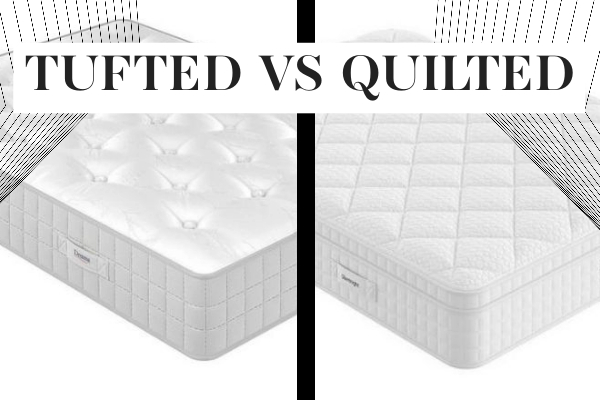Choosing the ideal mattress is crucial for a good night's sleep. Among the numerous decisions you'll make, one often-overlooked aspect is whether to opt for a tufted or non-tufted mattress. These two styles have distinct characteristics that can significantly impact your comfort and sleep quality. In this article, we'll delve into the differences between tufted and non-tufted mattresses to help you make an informed choice when shopping for your next bed.
Tufted Mattresses: A Tradition of Elegance
Tufting is a traditional method of mattress construction that involves securing the layers of the mattress together with tufts or buttons. These tufts pull the layers tight and create dimples or depressions on the mattress surface.
Advantages of Tufted Mattresses
- Durability: Tufted mattresses are known for their durability. The tufting process helps prevent the mattress layers from shifting or bunching up over time, extending the mattress's lifespan.
- Firmness: Tufted mattresses tend to be firmer and more supportive due to the tightness created by the tufting process. This can be beneficial for individuals who prefer a sturdier sleeping surface.
- Classic Look: The tufting process gives mattresses a timeless and elegant appearance. These mattresses often have a quilted or buttoned surface that can complement various bedroom aesthetics.
Disadvantages of Tufted Mattresses
- Less Cushioning: Tufted mattresses may have less cushioning compared to non-tufted ones. This can be a drawback if you're looking for a plush sleeping surface.
- Maintenance: While tufted mattresses are durable, they can be more challenging to clean because of the buttons and dimples. Dust and debris can accumulate in these depressions over time.
Non-Tufted Mattresses: Versatility and Comfort
Non-tufted mattresses, also known as non-quilted or smooth-top mattresses, feature a smooth surface without visible tufts or buttons. They are constructed using various methods, such as continuous coil or memory foam technology.
Advantages of Non-Tufted Mattresses
- Comfort: Non-tufted mattresses often provide a more cushioned and plush sleeping surface. This can be especially appealing for those who prefer a softer bed.
- Easy Maintenance: The smooth surface of non-tufted mattresses is easier to clean and maintain. You won't have to worry about dust or allergens accumulating in tufting dimples.
- Versatility: Non-tufted mattresses come in various styles and materials, offering a wide range of options to suit different preferences and sleeping positions.
Disadvantages of Non-Tufted Mattresses
- Less Durability: Non-tufted mattresses may be more prone to wear and tear over time, as the absence of tufting can allow the mattress layers to shift.
- Limited Support: Some non-tufted mattresses may not offer the same level of support as tufted mattresses. This can be a concern for individuals with specific support needs.
Making Your Decision
Ultimately, the choice between tufted and non-tufted mattresses depends on your personal preferences and priorities. If you value durability, a firm sleeping surface, and a classic appearance, tufted mattresses may be the better choice for you. On the other hand, if you prioritize comfort, easy maintenance, and versatility, non-tufted mattresses could be the way to go.
Consider factors like your preferred level of firmness, sleeping habits, and any specific health considerations when making your decision. Whichever style you choose, investing in a high-quality mattress that suits your needs is a crucial step towards achieving a restful and rejuvenating night's sleep.
